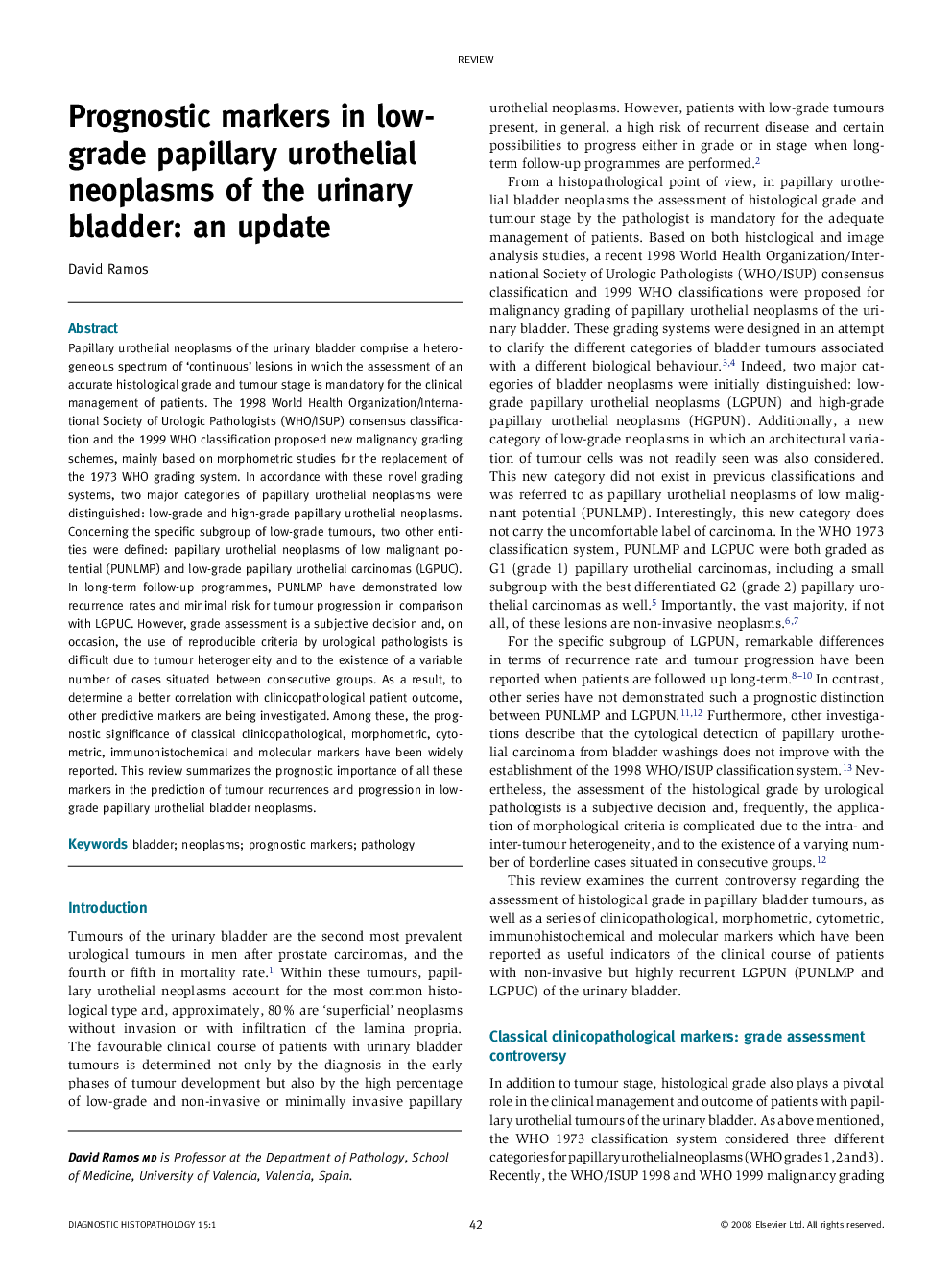| Article ID | Journal | Published Year | Pages | File Type |
|---|---|---|---|---|
| 4131659 | Diagnostic Histopathology | 2009 | 9 Pages |
Papillary urothelial neoplasms of the urinary bladder comprise a heterogeneous spectrum of ‘continuous’ lesions in which the assessment of an accurate histological grade and tumour stage is mandatory for the clinical management of patients. The 1998 World Health Organization/International Society of Urologic Pathologists (WHO/ISUP) consensus classification and the 1999 WHO classification proposed new malignancy grading schemes, mainly based on morphometric studies for the replacement of the 1973 WHO grading system. In accordance with these novel grading systems, two major categories of papillary urothelial neoplasms were distinguished: low-grade and high-grade papillary urothelial neoplasms. Concerning the specific subgroup of low-grade tumours, two other entities were defined: papillary urothelial neoplasms of low malignant potential (PUNLMP) and low-grade papillary urothelial carcinomas (LGPUC). In long-term follow-up programmes, PUNLMP have demonstrated low recurrence rates and minimal risk for tumour progression in comparison with LGPUC. However, grade assessment is a subjective decision and, on occasion, the use of reproducible criteria by urological pathologists is difficult due to tumour heterogeneity and to the existence of a variable number of cases situated between consecutive groups. As a result, to determine a better correlation with clinicopathological patient outcome, other predictive markers are being investigated. Among these, the prognostic significance of classical clinicopathological, morphometric, cytometric, immunohistochemical and molecular markers have been widely reported. This review summarizes the prognostic importance of all these markers in the prediction of tumour recurrences and progression in low-grade papillary urothelial bladder neoplasms.
